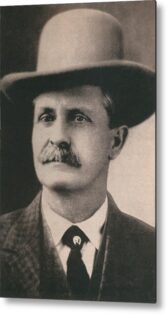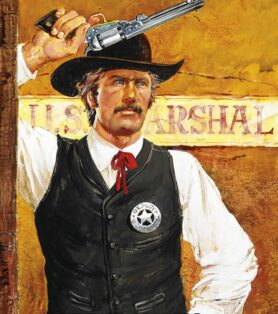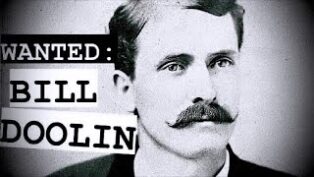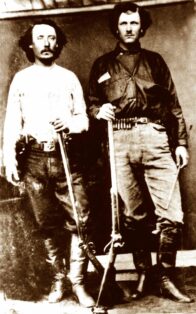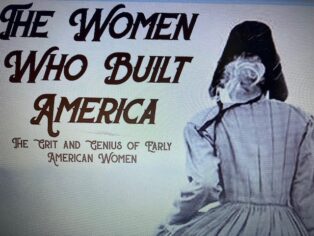Enter now to win a copy of
Tilghman: The Legendary Lawman and the Woman Who Inspired Him
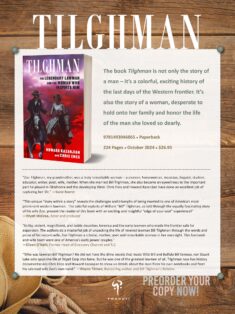
“This engrossing biography-within-a-biography offers well-written looks into the lives of a feared and respected Deputy U.S. Marshal and his wife, a poet and writer, plus a tragic 1924 event that tore them apart. Tilghman is a true story infused with Wild West and early 20th-century history, several pursuits of justice, details of a happy but challenging marriage, and a widow’s lengthy quest to honor her husband’s legacy.
For decades, Bill Tilghman, an Oklahoma-based federal marshal, had investigated crimes, survived gunfights, and chased down outlaws in several states, including Texas. He had been praised for his long service by many state and local officials and even by President Theodore Roosevelt. Now he was looking forward to retiring and staying home with his family and horses. But on November 1, 1924, the 70-year-old lawman was gunned down in Cromwell, Okla., while trying to disarm a drunken Federal Prohibition Officer.
Tilghman’s death left his wife, Zoe Tilghman, and their three young sons unable to pay their bills. However, the two biographers show how she was able to push her grief aside and find just enough work to keep her household afloat. The duty-minded marshal often had ridden off on crime-fighting assignments that required days or even weeks away from home. In his absence, Zoe had taken up writing again; she had begun writing stories and poems as a teen before she attended the University of Oklahoma. Over time, she had made some sales to magazines, book publishers, and poetry journals. She also had done some writing and editing for Harlow’s Weekly, an Oklahoma City newspaper. This time, she talked her way into a regular job as the publication’s literary editor. She also increased her personal writing output and penned more poems and books that sold.
But, as the two authors note, the work that she most wanted to complete was a biography titled The Marshal of the Last Frontier, a tribute to her husband’s crime-fighting career. As a young adult, Bill Tilghman had floundered and gotten into legal trouble at least twice. However, he had gotten a fresh start and found a new career when Sheriff Bat Masterson hired him to be an undersheriff in 1878 in dangerous Dodge City, Kansas.
Zoe began work on Bill’s biography in 1925 yet did not manage to finish it until twenty-three years later, in 1948. Daily life’s struggles had gotten in the way. Two of her three sons had turned to crime, but the third had joined the Army and would become a decorated officer in Europe during World War II. Also, the late marshal had lived a complex life that left much to document. At various times before or after becoming a lawman, he had been a buffalo hunter, Indian fighter, rancher, horse breeder, saloon keeper, and politician.
“I rewrote the book four times,” she recalled years later. “Once, I threw away a hundred thousand words and began anew. But by 1948, it was done. I had, in the process, learned a good deal about writing. [And] I had hoped that some time Bill’s life would be the object for a moving picture.”
Ironically, Bill Tilghman and several other survivors of America’s Wild West days had previously edged into the early movie-making world and formed their own production companies. In 1915, the marshal and a few friends had made a “patriotic drama” titled The Passing of the Oklahoma Outlaws. It focused on improving Oklahoma’s image in the world by re-enacting how several big-name bandits had been captured or killed. The making of the movie, who starred in it, and how it was distributed is eye-opening reading.
Meanwhile, Zoe Tilghman’s book was finally published in 1949 and “was well received not only by politicians like President Eisenhower but by critics from coast to coast,” the Tilghman authors note. No movie resulted. Nonetheless, Zoe’s efforts brought her an unexpected consolation prize. She got to write some stories for an early Western TV series, Death Valley Days.
Howard Kazanjian and Chris Enss acknowledge that producing this biography-within-a-biography would not have been possible without help from the Tilghmans’ granddaughter, Suzie. She gave them access to boxes full of Zoe’s and Bill Tilghman’s mementos, cards, letters, poems, and journals. “Much of the material used in this book,” the two authors report, “is being seen by the public for the first time.”
Tilghman is rich with historical settings, cultural atmosphere, and real-life characters, seen against a backdrop of rapid change. In the book, the Wild West is fading out and being taken over by new technologies, new settlers, and new expansions of urban areas. But as Oklahoma transitions from a territory to a state, many veterans of the “old days” are not yet ready to let go of the “old ways” that shaped them.” – Lone Star Literary Life
Tilghman
I'm looking forward to hearing from you! Please fill out this form and I will get in touch with you if you are the winner.
Join my email news list to enter the giveaway.
"*" indicates required fields


